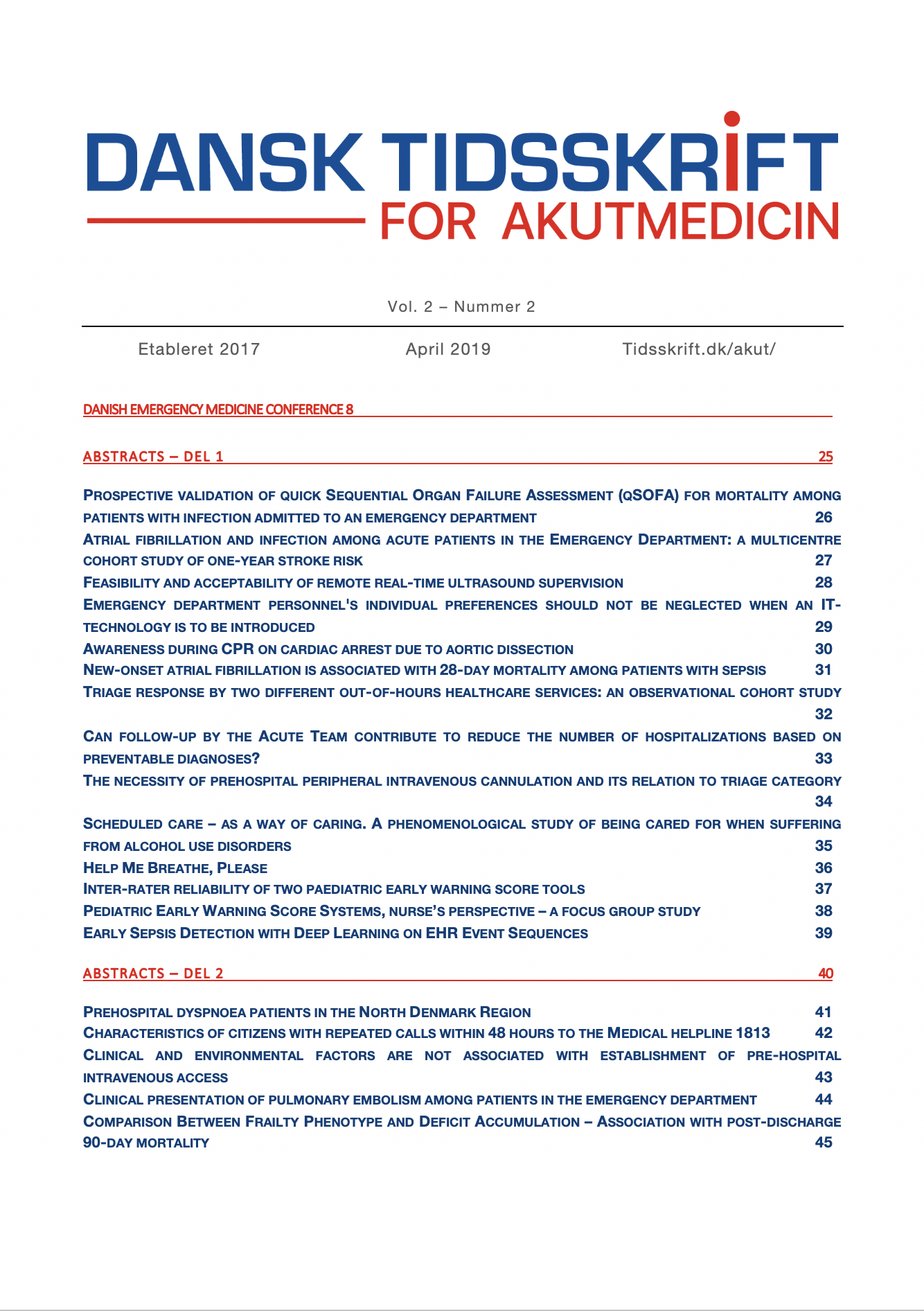Resumé
Background: The entry points to Danish acute care are the out-of-hours health care services (OOH) and emergency medical services (EMS). Where EMS is organized in a similar manner throughout Denmark, the OOH is not. Four regions (including the North Denmark Region) have a general practitioner operated service (OOH-GP), whereas the Capital Region of Copenhagen, (Copenhagen) Denmark has the Medical Helpline 1813, (OOH-1813) which is staffed by nurses and physicians. Nationally, access to out-of-hours healthcare and emergency departments requires referral by one of the healthcare services. The OOH services in the North Denmark Region and Copenhagen handle similar patients and health problems; however, no published research has compared the type of actions performed in response to patient calls. We investigated and compared the type of triage response given by OOH-GP and OOH-1813 to patient contacts in the study period and the proportion of subsequent hospitalization.
Methods: Observational cohort study of patients contacting OOH-GP and OOH-1813 from January 24th to February 9th, 2017. Patients with valid personal identification numbers were included. Primary outcomes were action performed by the call-handler i.e. telephone consultation, face-to-face consultation, home visit and hospitalization within 24 hours. Hospitalization was defined as a hospital stay of ≥24 hours.
Results: We included 32,489 contacts (OOH-GP: 21,149 and OOH-1813: 11,340 (representative sample)). Calls to the OOH-GP were handled as follows: 67.2% (n=14,214) telephone consultation only, 32.8% (n=6,935) face-to-face consultations including 1,089 home visits (5.1%). In comparison, at OOH-1813, 51% (n=5,763) were handled by telephone consultation only, 49% (n=5,575) were triaged to face-to-face consultation including 38 home visits (0.44%). The differences in triage were statistically significant (p<0.05). Subsequent admissions occurred after 524 (4.6%) OOH-1813 contacts and 798 (3.8%) OOH-GP contacts (OR = 1.22 (1.01;1.27)).
Conclusions: This comparison of OOH-1813 and OOH-GP shows significant differences in the triage responses, among these, notably more face-to-face consultations at OOH-1813. Subsequent hospitalizations were comparable with a small, but statistically significant, overrepresentation among the OOH-1813 cohort. These results could be due to the differences in organizational structure of the OOH or demographics in the two regions (capital vs city-rural), however further research
is needed to determine this.
Licenseret under en Creative Commons Kreditering 4.0 International-licens (CC BY 4.0).
© Forfatterne.


